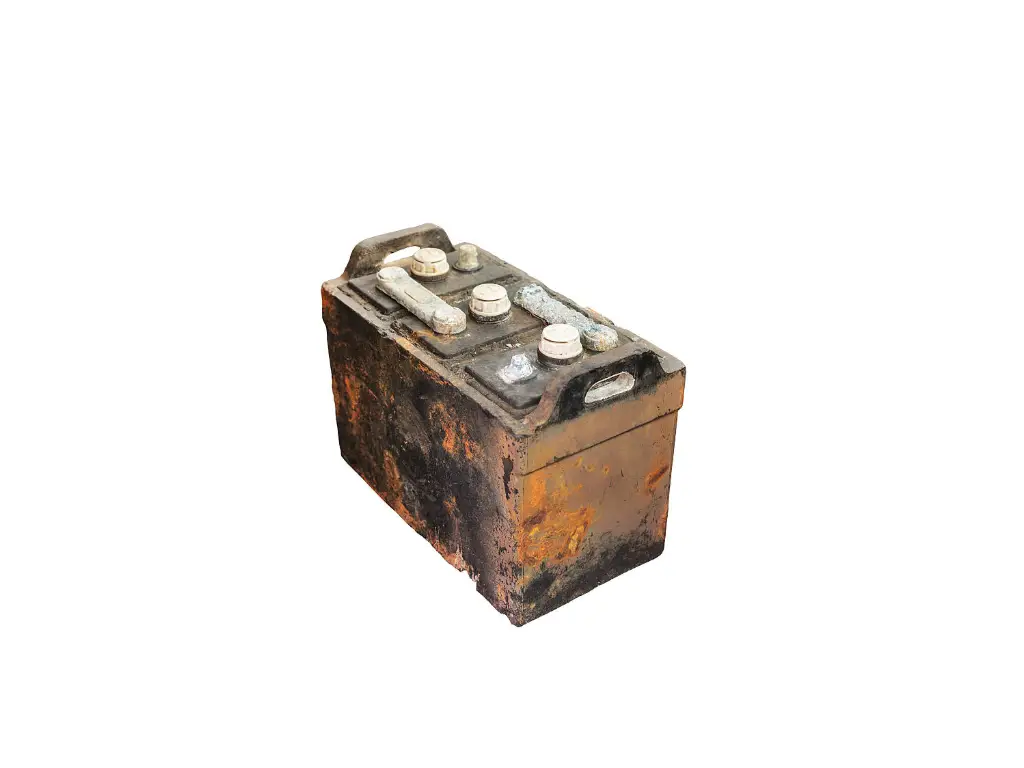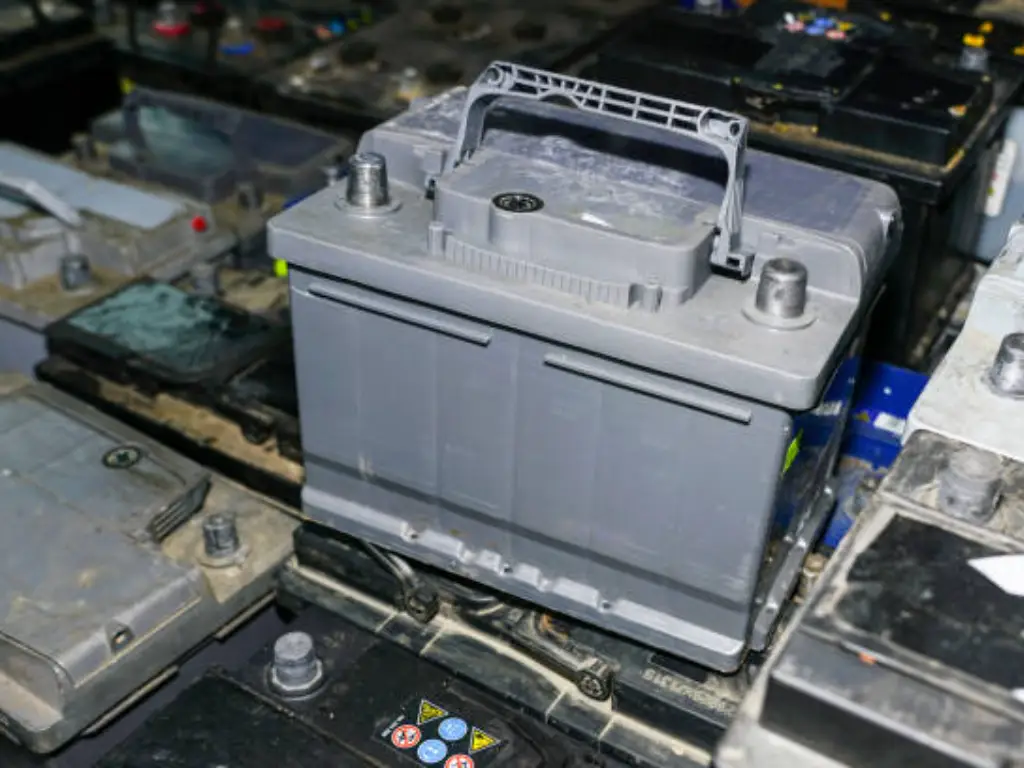Introduction
Hey there, sea enthusiast! Curious about the lifespan of those marine batteries that fuel your boat escapades? We all are! Just like your favorite beach ball, marine batteries don’t bounce forever. Their life isn’t just measured in years; it’s shaped by a mix of factors, from the battery type (think lithium or lead-acid) to the breezy ocean vibes they’re exposed to. Eager to decode the enigma of “how long does a marine battery truly last?” or “how many sunsets can a boat battery see?” Grab your battery charger, and let’s embark on this electrifying exploration!

4 Key Factors Influencing Marine Battery Longevity
Alright, sea fans! Before we dive deep, let’s get something straight: marine batteries, much like us, have their quirks and factors that determine how long they’ll stick around. Everything from the battery’s VIP quality to the sunny or stormy days it faces affects its lifespan. Let’s decode this, shall we?
Quality Matters
Ever thought, “How many waves will my marine battery ride?” Well, quality’s the captain steering that ship. Just as you wouldn’t compromise on your boat’s shiny paint, the same goes for marine batteries. The crème de la crème of batteries, be it AGM, lithium, or the classic lead-acid, are crafted with top-notch materials. This craftsmanship shields them from pesky issues like sulfation, a notorious troublemaker for lead-acid types.
The superstar marine batteries come with a solid BMS (Battery Management System) that keeps the voltage in check, ensuring you’re not left with a dead battery during your sunset cruise. Plus, these champs are built for the long haul, enduring many charge cycles without batting an eyelid.
And hey, it’s not just the inside that counts. Top-tier batteries flaunt impressive corrosion armor, making sure the sea’s salty kisses don’t shorten their life. So, while splurging on a quality battery might pinch your wallet a tad, it’s a splash worth making. Because, let’s be real, who wants battery shopping when there’s an ocean waiting?
Weather & Temp
Ever notice how the weather can mess with your mood? Well, marine batteries are no different, whether they’re the high-tech lithium variety or the trusty lead-acid ones.
In cold weather, the chemical reactions inside the battery slow down. It’s like how we all feel a bit sluggish when it’s chilly. Your marine battery might not give you the full power you’re accustomed to when the temperature drops. On the other hand, hot weather can make the battery’s internal reactions go into overdrive, risking overcharging and potential damage. Imagine your battery getting a sunburn; it’s not a good look, and it’s definitely not healthy.
But wait, there’s more! Moisture can also be a game-changer. It’s the silent culprit that can lead to corrosion, particularly in lead-acid batteries. Corrosion can make it hard for the battery to deliver power efficiently. Picture trying to sip a smoothie through a straw that’s been pinched; it’s just not going to work well.
So, while we can’t negotiate with the weather, being aware of its impact can help us take steps to keep our marine batteries in prime condition for many more sea adventures.
Charge Cycles
Every time your battery grooves from completely drained to fully charged, it completes one dance move, or in battery terms, one charge cycle. But here’s the twist: each battery has only so many moves in its repertoire.
Different batteries have varied dance endurance. For instance, lithium batteries, especially those snazzy lithium iron phosphate ones, can outdance the traditional lead-acid types by a significant margin.
But the dance isn’t just about the number of moves. The way you recharge your battery is akin to picking the right music. A compatible battery charger, delivering the perfect amps, ensures your battery keeps its groove on for longer. But beware! Charging missteps, like overcharging or undercharging, can lead to complications, such as sulfation in lead-acid batteries. It’s like playing the wrong tune during a dance-off.
So, always be in tune with your charger and keep a close watch on the voltage. This ensures your marine battery remains the star of the show for many more adventures.
Corrosion
The Silent Foe of Marine Batteries Corrosion is the quiet troublemaker that can slowly ruin your marine battery. It’s similar to how rust can eat away at a classic car over time. In marine settings, the salty air can be particularly harsh, speeding up the corrosion process, especially in boat batteries. When corrosion attacks the battery terminals, it weakens the connections and reduces the battery’s power output. Imagine trying to jog while carrying a heavy backpack; the energy just doesn’t flow as it should.

But here’s the upside: You can fight corrosion with regular maintenance. Simple steps like cleaning the battery terminals with a mix of baking soda and water can make a big difference. And if you notice any early signs of corrosion, it’s best to deal with it right away to prevent it from getting worse.
Lifespan of Different Marine Batteries
Marine batteries come in various shapes and sizes, each with its unique characteristics. From traditional lead-acid batteries to modern lithium iron phosphate ones, the choices can be overwhelming.
Flooded Lead-Acid Batteries
Flooded lead-acid batteries are the granddaddies of the marine battery realm. They’ve seen it all and have been the trusty sidekick for countless boaters through the years. Packed with liquid electrolytes, they do demand a bit of pampering to ensure they stay hydrated. The silver lining? They’re usually easier on the wallet compared to their AGM or lithium pals.
But, like all classics, they have their idiosyncrasies. Leave them uncharged for too long, and they might throw a sulfation tantrum. A little clumsiness, and they could make a mess if knocked over. As for how long they’ll stick around? With some TLC, they can power your marine adventures for a good 3 to 7 years. Just keep a watchful eye on their voltage and make sure they’re always quenched to ensure they live their best life.
AGM Batteries
AGM, short for Absorbent Glass Mat batteries, comfortably sits between the old-school flooded lead-acid batteries and the high-end lithium ones. They offer a balance, being more advanced than traditional batteries but without the premium cost of lithium ones. Their design uses glass mats to soak up the electrolytes, ensuring no messy spills, which is a blessing on unpredictable seas.
A major plus for AGM batteries is their resilience against sulfation. They also have a knack for holding onto their charge longer when idle, thanks to a lower self-discharge rate. Charging them? They’re not picky. Whether it’s a simple maintainer, a standard battery charger, or a top-tier maintenance charger, AGMs are up for it. As for their longevity, with some attention and care, they can serve you well for around 4 to 7 years. Just remember to monitor the voltage and keep them charged to ensure they stay in prime condition.
Gel Batteries
Gel batteries excel as a premier option in the marine battery sector. What’s their standout attribute? They employ a gel-infused electrolyte, providing exceptional spill and leak resistance – a critical advantage in the often capricious marine environment. Moreover, their proficiency in enduring repeated deep discharge cycles is a testament to their resilience.
Nonetheless, these batteries necessitate vigilant upkeep, particularly in their charging regimen. Utilizing incorrect chargers or inappropriate charging methods could lead to potential damage. They require chargers specifically designed to cater to their distinctive gel-based composition. While these batteries are adept at maintaining cooler temperatures due to their capacity for handling high currents, they may not be the optimal choice for scenarios requiring rapid power delivery. However, with diligent maintenance and the correct charging equipment, a gel battery can reliably perform for an estimated duration of 2 to 5 years.
Lithium Batteries: The Modern Marvels of Marine Power
Lithium batteries, particularly lithium iron phosphate (LiFePO4) models, are increasingly becoming the go-to choice in the marine battery market. Renowned for their high efficiency and sleek, compact structure, these batteries provide substantial power in a remarkably small footprint. This feature is incredibly beneficial for boats where space optimization is essential, as they can store an impressive amount of energy in a confined space.
The hallmark of lithium batteries is their enduring performance. Similar to marathon runners who maintain their stamina over long distances, these batteries are capable of enduring numerous charge and discharge cycles with minimal performance loss. Additionally, they are equipped with an advanced Battery Management System (BMS), which ensures they charge efficiently and significantly reduces the likelihood of unexpected battery malfunctions. The primary consideration, however, is their cost – they are notably higher-priced. Yet, considering their extended lifespan (often exceeding ten years) and exceptional performance, investing in lithium batteries is a strategically sound decision for sustained usage.
Maintenance Tips to Maximize Marine Battery Life
Just as you wouldn’t ignore an oil change for your boat’s engine, overlooking the maintenance of your marine batteries is a no-go. Regular inspections can help you identify early signs of issues such as corrosion or dwindling voltage. As the saying goes, prevention trumps cure every time.
| Maintenance Tip | Description |
| Regular Charging | Ensure your battery is regularly charged. A battery maintainer can be a lifesaver, especially during off-seasons. |
| Clean Terminals | Keep an eye out for corrosion. A simple mix of baking soda and water can help clean terminals and keep them corrosion-free. |
| Check the Voltage | Regularly check the voltage of your battery. If it’s consistently low, it might be time for a new battery. |
| Avoid Deep Discharges | Try not to discharge your battery too much. Deep discharges can reduce the lifespan of your battery, especially if it’s a deep cycle battery. |
Related Post: Mastering the Basics: How to Test a Deep Cycle Battery Effectively
Signs of Your Marine Battery Needs Replacement
All good things have an expiration date, marine batteries included. So, how do you figure out when it’s time to part ways? Look out for these red flags:
- Battery Bulge: If your battery looks like it’s been indulging in too many midnight snacks, it’s more than just an eyesore. Batteries can swell, especially if they’ve been overcharged or exposed to high temperatures. This bulging is a result of gas buildup inside the battery. It’s not just an aesthetic concern; it’s a safety issue. The internal components are under stress, which could lead to leaks or even a dangerous explosion. In short, a bulging battery is a compromised battery that needs to be replaced.
- Voltage Blues: A battery in tip-top shape should hold its charge after a full recharge. If you notice that your battery is consistently low on power, even post-charge, it’s a sign of declining health. This persistent low voltage is a red flag that the battery can’t store energy as efficiently as it once could. Factors like sulfation in lead-acid batteries or general wear and tear can diminish a battery’s capacity over time. If you find yourself perpetually reaching for the battery charger, or if the battery’s charge doesn’t last long, it’s high time to think about a new battery.
- Old Age: Age Matters for Batteries Every battery has its own life story, influenced by its type, how it’s used, and the care it receives. If your battery has been your loyal companion for years, it might be approaching its final chapter. Always keep an eye on its manufacturing date and stack it up against the typical lifespan of its kind. Even if an aged battery seems to be in the groove, its insides might be on the decline, making it less effective and possibly unpredictable. It’s wise to bid adieu to an older battery before it throws a surprise party.

- Frequent Need for a Jumpstart: A Telltale Sign Constantly jumpstarting your boat? That’s not just an inconvenience; it’s a neon sign flashing “Battery Trouble Ahead!” A battery in its prime should keep its charge and deliver power consistently. If you’re always giving it a jump, it’s a sign of a tired battery that’s having a hard time dishing out the required amps.
- Strange Smells: Odd Odors Alert! Ever caught a whiff of rotten eggs near your battery? That’s not breakfast gone wrong; it’s a warning sign. Such peculiar smells, especially the notorious rotten egg scent, signal the release of hydrogen sulfide gas. This can be a result of overcharging or some internal mischief. Beyond being a nose-pincher, this smell is a loud and clear call to inspect your battery and perhaps usher in a replacement.
- Visible Leaks: Spotting the Drips Spotted any mysterious puddles or moisture around your battery? That’s not just battery sweat; it’s a sign of leakage. Batteries that leak are not just messy; they’re a hazard. The escaping acid can play a villain to the nearby components. If you see a battery leak, it’s time to swap it out pronto and give the affected zone a thorough cleanup to fend off any further mischief.
You May Like: Expert’s Guide to Choose the Best Lithium Marine Battery for Reliable Power
Frequently Asked Questions
- Q: How many sunsets does a boat battery witness?
- A: If it’s pampered right, anywhere from 3-10 years, depending on its type. That’s a lot of sunsets!
- Q: What’s the secret sauce to a marine battery’s life expectancy?
- A: It’s a mix! Quality, how often it’s used, the TLC it gets, and the weather it braves all play their parts.
- Q: The age-old debate: Lithium vs. Lead-acid. Who wins the longevity game?
- A: Team Lithium usually takes the trophy for lasting longer. But remember, quality comes at a price, and in this case, it’s a bit heftier!
Conclusion
In every exhilarating maritime adventure, marine batteries play a pivotal role. The longevity of these batteries may vary, oscillating between highs and lows, but with attentive care, regular maintenance, and a keen understanding of their needs, they can reliably accompany you on numerous voyages. Therefore, during your next sailing escapade, give a moment’s consideration to your marine battery. It serves as the unsung hero, quietly powering the narratives of your sea journeys.
Score a Quick Quote from Keheng: Marine Batteries Built to Last
In search of a marine battery that’s in it for the long haul? Keheng has got you covered with a selection of top-notch, enduring marine batteries designed for the realities of life at sea. Step into a realm of steadfast power, rugged durability, and unwavering reliability. Snag an instant quote now!




